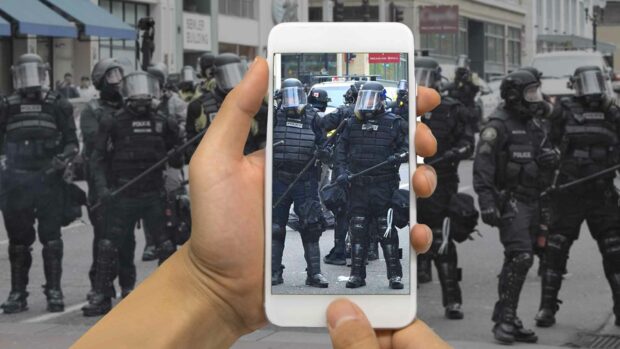Table of Contents[Hide][Show]
Can YouTube be an effective crime fighting tool? Police are catching suspects by posting sharing surveillance videos on YouTube, but its effectiveness is still unclear.
After studying a surveillance video of two men allegedly using stolen credit cards at a Home Depot, patrolman Brian Johnson at the Franklin, Massachusetts, Police Department realized that he needed help identifying the suspects.
He posted security camera footage of the suspects on YouTube, and then e-mailed the video link to about 300 people and organizations, asking them to help identify the men.
“You don’t have to be a technology wizard to figure out how to watch a video on YouTube,” Johnson told the L.A. Times. His decision to post the video on YouTube was a fast and sharable way to distribute the security camera footage.
Although the video that Johnson uploaded to YouTube got thousands of video views, he credits the successful arrests in this case to diligent police work, rather than YouTube.
Using YouTube As A Law Enforcement Tool
The Franklin, Mass. Police Department isn’t alone in experimentation with YouTube. Other police departments have used YouTube as a law enforcement tool, posting videos of suspects and soliciting help from the Internet-using public in identifying them.
Experts say that the idea of crowdsourcing crime investigations has potential, but it’s too soon to tell whether it will be successful in the face of constantly evolving technologies and the difficulty of making a video stand out among millions.
In December 2006, police in Hamilton, Canada posted a 72-second surveillance video on YouTube in the hopes of locating a suspect in a fatal stabbing outside a hip-hop concert. According to Detective. Sgt. Jorge Lasso, said the video got over 35,000 views and generated enough information to help police make an arrest.
In addition to issuing a news release about the crime, Detective Lasso also shared the clip on hip-hop fan websites, bringing the video to the right audience.
Using YouTube to connect with the public, especially younger Internet users, was a very effective strategy in this case.
Is YouTube A Primary Crime Fighting Tool, Or Just An Extra Resource?
In 2001, a homicide case in Aventura, Fla., was still open. Police used footage from a supermarket security camera to identify a man they believe may have information about the crime. Sgt. Michael Bentolila narrates the video and points out that the man has a tattoo or birthmark on his arm. He urges viewers to keep an eye on him as he walks around the store, noting that he seems nervous and looks away from the camera frequently.
Sargent Bentolila said he had not received any solid leads in regard to the identity of the person who posted the video.
How YouTube Is Being Used Against Police Officers
YouTube might be a promising tool to help police, but it goes both ways. Police are also finding videos of themselves being shared on YouTube.
Groups that monitor police behavior frequently search YouTube for videos of arrests they believe involved excessive force or abuse. For example, a clip of an LAPD officer punching a suspect in the face surfaced on YouTube in 2006, prompting an FBI investigation.
Is The Juice Worth The Squeeze? – Where Should Police Focus Their Valuable Time, Using Social Media Or Working Leads?
Posting videos on YouTube, gives the public a chance to play detective. There’s a natural instinct to help, or solve something, and giving the public an opportunity to contribute to the solving of a crime can be a very satisfactory feeling.
But at one point does it become a waste of time? Should police officers spend their time uploading videos to YouTube from their desks or out on the street talking to witnesses?












